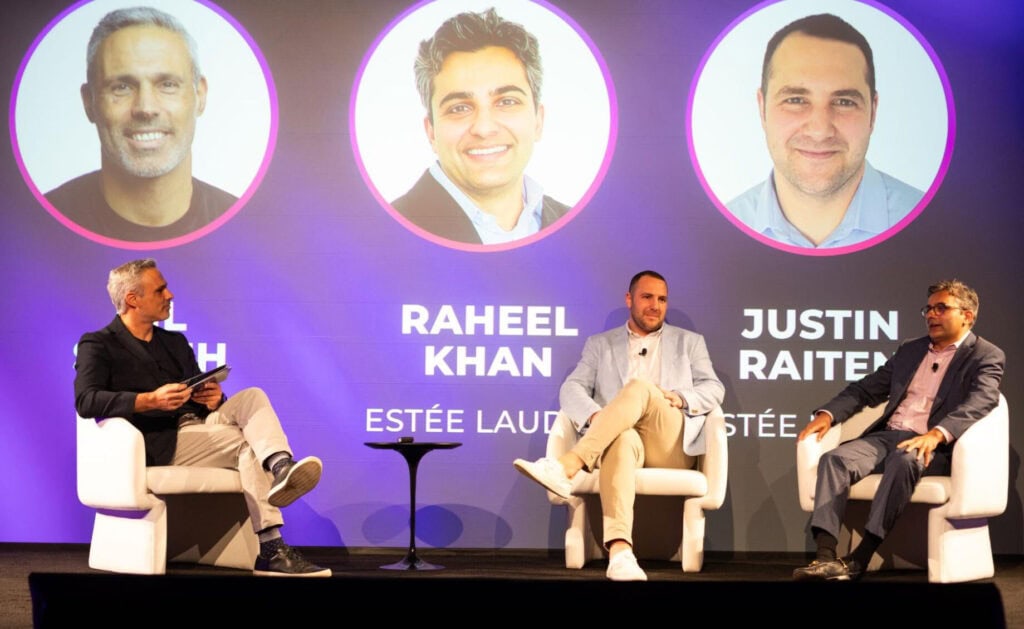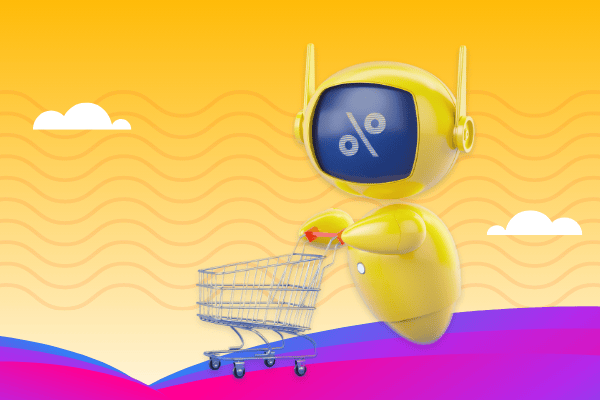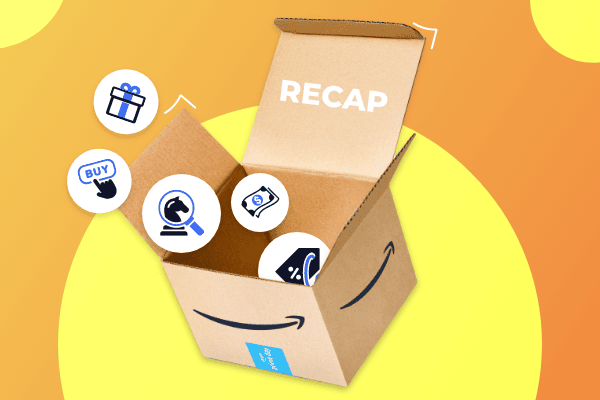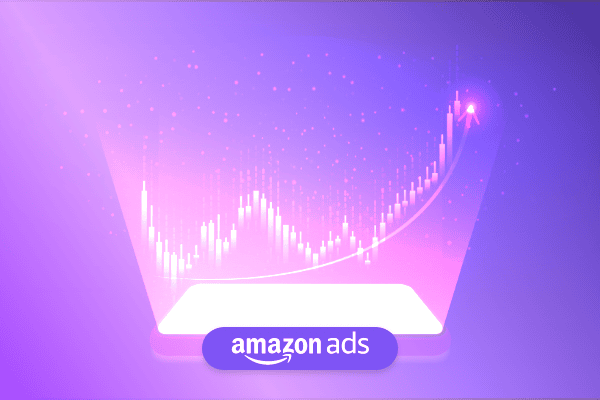Summary
At ShopAble 2025, The Estée Lauder Companies demonstrated how they are transforming beauty marketing with GenAI. By blending human creativity with AI-powered insights, Estée Lauder is redefining consumer engagement across rapidly evolving digital platforms. Their leadership shared how GenAI is helping them scale personalization, accelerate content production, and drive measurable growth in an increasingly complex commerce landscape.
ShopAble 2025 is an annual commerce media event host by Skai, gathering marketing leaders, industry innovators, and brand executives to explore emerging trends and practical strategies driving the future of commerce. Held in New York, ShopAble offered candid insights, actionable takeaways, and real-world stories from the forefront of retail media, generative AI, and omnichannel marketing.

When it comes to AI, particularly the latest in GenAI, it’s not about the technology – it’s about the intent. As Skai President, Gil Sadeh, said during his opening remarks at ShopAble 2025, “We can use AI to move less, interact less with people, connect less with nature. Or we can choose to use AI to become more humane, focusing on what only we as humans can do: create, innovate, dream and dare. and, solve real-world problems.”
One business that truly understands this choice and has embraced the power of AI to drive innovation and stay ahead of the curve is The Estée Lauder Companies. On stage with Sadeh at ShopAble 2025, their leaders offered one of the most grounded, yet visionary, looks at how a global brand is using GenAI on a daily basis to push the boundaries of what’s possible in commerce media and beyond.
After all, consumer behavior moves fast in every category. In beauty, it moves faster. Trends, conversations, and shopping patterns shift constantly, driven by creators, platforms, and cultural moments that are hard to predict and even harder to track at scale. That’s what made this session especially useful: a candid look at how Estée Lauder’s leaders are thinking about where AI fits, and how they’re building teams and capabilities to keep pace.
Raheel Khan, SVP of Foresight Growth & AI, and Justin Raiten, VP of Media & Influencer Marketing, shared what they’ve learned and where they see the next set of opportunities.
Estée Lauder’s vision for GenAI
Khan: “We talk about this idea of math and magic. People bring the magic, but generative AI brings the math.
“Our strategy is around three buckets. Bucket one is how do we enable our employee base to have generative AI solutions for the jobs that they need to do. Microsoft allows us to access data and insights so that our knowledge workers can essentially get to the math and focus their creativity where it matters for growth.
“The second bucket is really around proprietary platforms. We’ve been doing generative AI for the last two years, and we want to build with our partners where technology is going, not where it is today. And the third bucket is around how we drive transformation in our industry… There’s no more media, there’s no more commerce—it’s all blurred. To get to this precision, you can’t have people sitting and thinking about how to do this. You have to rely on the math piece so people can then bring the magic.”
How GenAI is changing Estée Lauder’s approach to consumer engagement
Raiten: “Consumers are watching more content on more platforms for entertainment, for discovery, for research, for commerce and shopping. And that’s especially true in beauty, where creators, trends, product launches, and what’s happening in store and online are changing the way consumers discover our brands and talk about our brands.
“Our goal is to integrate our brand into these consumer conversations, deliver the right content that feels relevant to that consumer’s mindset, and then offer as seamless of a checkout experience as possible—whether that’s on TikTok Shop, Amazon, brick and mortar, or D2C.
“AI helps us do that from end to end—predicting the length of the trend, understanding if it has staying power, audience insights, taking creative learnings cross-channel… allowing us to move with more speed and accuracy on top of our day-to-day media optimizations.”
Khan: “In our industry, growth is a direct correlation of recruiting new consumers. The only way to recruit new consumers is doing what Justin just mentioned. But to do that, you have to rely on AI and generative AI solutions because otherwise the cost of doing this at scale is just not possible anymore.”
How Estée Lauder teams are working differently with AI
Khan: “Our CEO publicly talked about this… our Too Faced brand launched a mascara, and previously it would take months to create a campaign—video, images, all these assets pushed to every platform.
“Using AI, the process was completely different. There were no more handovers from insights to marketing to creative to go-to-market media. They were all together from the get-go, looking at granular insights… social listening to understand the discourse around that mascara by consumer segments. Together, they created the script and video assets using AI trained on our creative… and within under three weeks, went from ideation to launch. They created content specific to consumer segments.
“We know already that consumers are discovering our products differently now than they were in the past… They’re actually relying on GPTs to understand what is the right mascara for them.”
What’s next for GenAI at Estée Lauder
Khan: “GenAI is one of those things that every three to six months gets double smarter, double cheaper, double better. Even if it’s the next six months, don’t think about where GenAI is today. Think about where GenAI will be six months from now and start to create your teams and capability sets to leverage where it will be.”
Raiten: “AI isn’t a magic bullet… there’s not going to be one single tool. It’s going to be integrated into everything that we’re doing, and it’s going to be a full suite of products that’s really going to give you that competitive advantage.
“When I talk to anyone whose team isn’t leaned in or just starting, I say take an internal look and understand your pain points. Where are the parts where you’re thinking, ‘I wish we could be faster here’ or ‘I wish we had more insights there’? Using AI for the sake of saying you’re using AI is fun and cool, but it won’t drive your business.
“Identify internally: ‘If I was faster on this, we could get to market quicker than competition,’ or ‘Where do I need more insight?’ Find your pain points, then look for the solutions that help address them.”
Khan: “Don’t outsource the understanding and use of AI to anyone—not to consultants, not to, I don’t know, Gen Zers in your organizations. This is really the job of everyone to understand. There’s an art of asking questions. The world where we used to bonus and promote our teams for knowing the answers is gone. It’s now about asking the questions, and there’s an art to that.”
These were just some of the insights shared on stage at ShopAble 2025.
Key takeaways for marketers
Here are a few of the core ideas that The Estée Lauder Companies’ leadership emphasized—points any marketing team thinking about GenAI would do well to consider:
People bring the magic; generative AI brings the math. Use AI to handle what scales—data, precision, insight—so teams can focus on what drives differentiation. The balance between the two will define how effectively brands compete.
Growth requires recruiting new consumers, and scaling that effectively today isn’t possible without AI and GenAI. As acquisition costs climb and channels fragment, AI-powered targeting and personalization are becoming the only viable way to scale new customer growth efficiently.
AI isn’t a magic bullet or single tool; competitive advantage will come from integrating a full suite of AI solutions. The value won’t come from chasing one tool. It will come from building a connected ecosystem of solutions that fit your business and workflows.
Don’t outsource understanding AI to consultants or younger employees. It’s everyone’s job to learn and master it. Teams at every level need to engage with AI directly. The companies that build that capability internally will move faster and make better decisions.
Competitive advantage comes from knowledge workers who understand how to use AI effectively. There’s an art to asking the right questions. Prompting, framing, and strategic questioning are quickly becoming critical skills. They’ll separate teams that extract real value from AI from those that don’t.
Don’t use AI just to say you’re using it. Find your pain points first, then seek AI solutions that address those issues directly. The work starts with identifying where AI can drive real impact. Without that focus, AI investments risk becoming noise.
The gap between what AI can do and how most marketing teams are using it is still wide. What stood out in this session was how deliberately Estée Lauder is closing that gap—by focusing on fundamentals: building capability, clarifying where AI fits, and keeping teams responsible for driving outcomes.
It’s an approach worth watching – and emulating – as the future of tomorrow rapidly becomes the reality of today.
Frequently Asked Questions
The Estée Lauder Companies uses GenAI to enhance consumer engagement by delivering personalized content, optimizing media strategies, and accelerating product launches. GenAI helps their teams analyze trends, predict consumer behavior, and create tailored marketing experiences across digital and physical channels.
GenAI is critical for scaling customer acquisition and personalization in the fast-moving beauty industry. It enables brands like Estée Lauder to process vast amounts of data, target new audiences with precision, and adapt to rapidly changing trends, ensuring more efficient and impactful marketing.
Integrating GenAI into commerce media allows companies to streamline content production, enhance consumer targeting, and improve overall marketing efficiency. At The Estée Lauder Companies, GenAI helps reduce campaign timelines, create segment-specific content, and drive measurable business outcomes.







